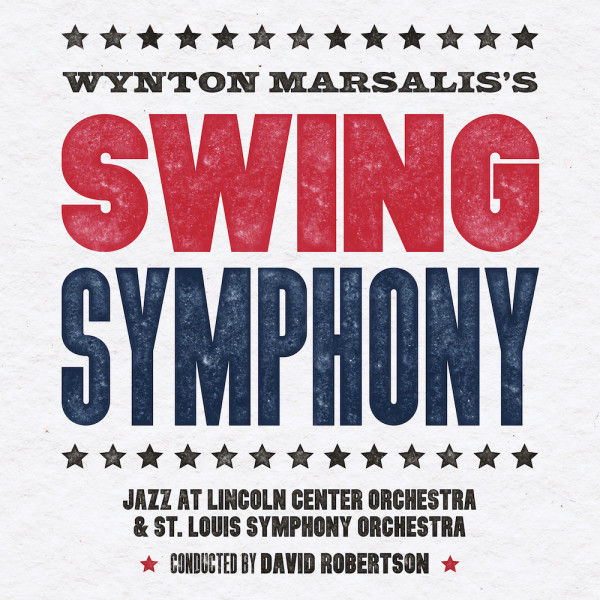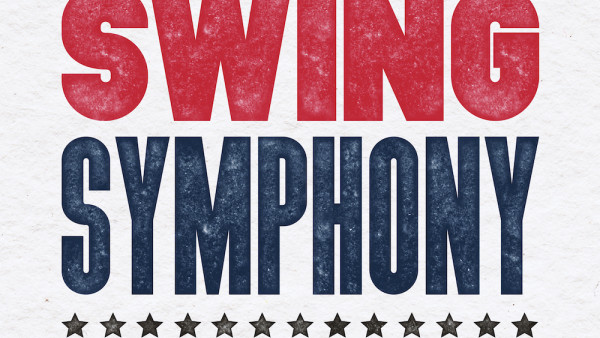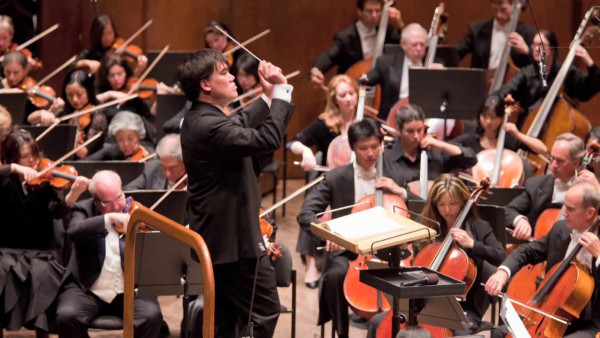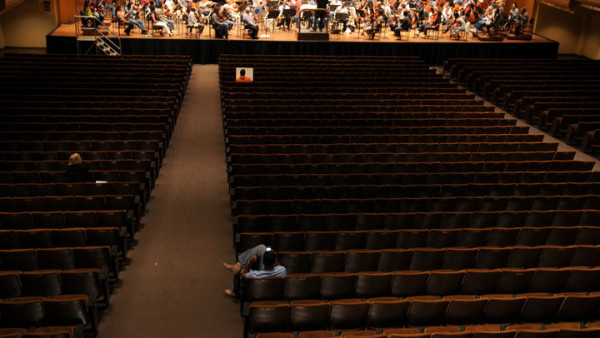U.S. Premiere of Swing Symphony to be Broadcast Live on PBS
Wednesday evening, September 22, will be a very special occasion. On that occasion Live From Lincoln Center will inaugurate its 35th anniversary season of presenting the arts from the stages of America’s premier Performing Arts center.
It is now a longstanding tradition of Live From Lincoln Center to begin a new season with the Gala Opening Concert by the New York Philharmonic. Alan Gilbert begins his second season as the Philharmonic’s Music Director with music from the 19th, 20th and 21st centuries. From the 19th, the Tone Poem Don Juan by Richard Strauss; from the 20th, a work with one of the longest titles in the repertory for orchestra: Paul Hindemith’s Symphonic Metamorphoses on Themes of Carl Maria von Weber; and from the 21st, the American premiere of Wynton Marsalis’ Symphony Number 3, titled Swing Symphony, with a guest appearance by Mr. Marsalis and the Jazz at Lincoln Center Orchestra.
Jazz at Lincoln Center, the newest constituent member of New York’s Lincoln Center for the Performing Arts, was formed in 1987. From the very beginning its Music Director has been and continues to be the charismatic trumpet player, Wynton Marsalis. The Jazz at Lincoln Center Orchestra is comprised of some of today’s most outstanding jazz musicians, and they have brought the sounds of jazz not only to New York and other American music centers but also on tour to various music capitals of the world. As a matter of fact, it was in Berlin last June, with Sir Simon Rattle and the Berlin Philharmonic, that Marsalis’ Swing Symphony received its world premiere.
The Symphony was commissioned jointly by the New York Philharmonic, the Berlin Philharmonic, the Los Angeles Philharmonic and London’s Barbican Center. Wynton Marsalis was the first jazz composer to have been awarded the Pulitzer Prize in Music for Blood on the Fields. As in his other symphonic works, Swing Symphony offers a synthesis of jazz styles in collaboration with a symphony orchestra. Describing the last movement of the “Swing” Symphony Marsalis has written: “It features slapping and a groove that we all play together, and it has a long melody and a space for everyone to play. And it brings together many different feelings. Then it goes into the church groove ‘cause the centerpiece of a lot of Afro-American music is church music. And then it breaks down into something that is at the end of your life and you reflect on everything…that’s why at the end I have us go “Huuuh.” It’s like that last breath that you take. Like we did this and we had a good time. That’s what we conclude in jazz, it’s an optimistic music.”
The other two works on the program exploit the Philharmonic’s virtuosic side. Strauss’ musings on the life and times of history’s fabled lover, Don Juan, is a riot of orchestral color, with a particularly suave solo for the oboe and stunning heroics in the French horns. And Hindemith’s work, composed in the United States when he was a refugee from his German homeland, has become a favorite calling-card for orchestras wishing to show off their individual and corporate excellence. It was the New York Philharmonic, under Artur Rodzinski’s direction, that played the world premiere performance of the score in the early 1940s.
So a festive event awaits us all on Wednesday evening, September 22: the gala opening of the New York Philharmonic’s 2010/2011 season. Please check your local PBS station’s schedule for the exact time and date of the telecast in your area. http://www.pbs.org/livefromlincolncenter/





Comments
For the last three or four years, the vast majority of the great classical music shows broadcast by PBS were marred by an incompetent sound engineer using a circuit that cause the audio to drop to zero when the volume of the music goes beneath a certain threshold. I saw this program when it was broadcast by PBS and then from my local PBS affiliate WTVS in Detroit. The audio totally dropped out of all the quiet parts of the Swing Symphony. I turned my TV back on a bit later during the Strauss work and you could see the orchestra playing but there was no sound at all for many periods some lasting up to 2 or 3 seconds in duration. The sound is like a loose connector but it’s not. It is a circuit that this sound engineer sets the threshold up to high. A circuit like this should never be used at all, even when no music is playing, because unwanted attention is drawn to the silent parts by loss of ambient room noise. This ‘engineer’ no doubt thinks he is cleaning up the audio or something like that but he is ruining the music. After months of trying, I finally got a reponse from Michael Getler who assured me he will make sure the right people at PBS hear my pleas Monday morning. I hope someone will fix this problem.
Aji Sabaki on Dec 12th, 2010 at 5:52am